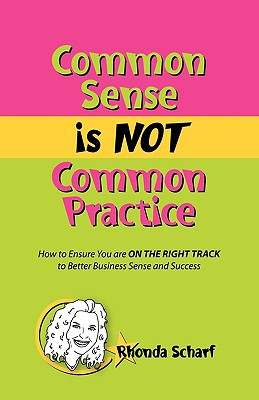

 |

|

The average rating for Common Sense is NOT Common Practice: How to Ensure You are ON THE RIGHT TRACK to Better Busi... based on 2 reviews is 3.5 stars.
Review # 1 was written on 2015-07-27 00:00:00 Kenneth Lemaster Kenneth LemasterServes as a reminder to follow through on your plans and ideas. |
Review # 2 was written on 2010-08-18 00:00:00 Ben Shepherd Ben ShepherdGenerally worth the read if you're a CEO or senior executive of a company. Basic points are: * Develop a strong financial model of how your business operates, identifying / creating the financial metrics that are important for your business * Find the elements under your control that need most attention, and work on that * Make your financials, and those elements visible to your entire company. Teach everyone top-to-bottom what the knobs are in your business, and how each person's individual work affects the knobs or the results * Get your staff to own those numbers / variables * Do this via collaborating with the team to create challenges & games to tackle the metrics that need attention. Achieving the goals thus mean you won that game. All will be fun. * Share both good, and bad news. CEO credibility comes from honesty, not sugar-coating. I'm roughly in agreement with most of the things in this book from a style perspective. I was fairly open with financial position with staff when I was a CEO, though didn't go the full boat of transparency & enrollment the way the author (Stack) suggests. On reflection, I would probably lean more towards his full transparency than I have in the past if I were in that position again. However, a fair bit of Stack's view works well for a mature industry, where you're taking share from other competitors because of a combination of low cost, high deliverability / quality, and sales effectiveness. Many businesses operate in a different environment, though, and some of his advice doesn't translate to those environments. I've spent most of my time in early-stage, high-growth companies. There are multiple phases in that type of environment: * Find product-market fit. Success comes less from concentrating on managing the financials, and more from making sure you can sell lots of your product to your intended customer. During this time, unpredictable spending is important to do in some areas, and avoid in others; revenue is highly unpredictable, but finding the knobs that you can turn to make growth go fast is THE most important thing. * Early growth. Once you know you can spend $0.50 this week to acquire a customer that brings in $0.10 of revenue per month - totaling nearly $5.00 over the next 4 years - you spend like crazy to acquire as many of those customers as possible, as fast as you can. This creates a HUGE cash trough that hits you right in the face, because you need to pay the cost to acquire the revenue up-front, and it takes at least 6 months to collect that cost back. If you can grow your customer base 100% / year, but it might cost you $30M in cash that you don't have to do it in that year, and looks like you're losing money, you don't hesitate - you go get the cash & spend it because the long-term value of that spending is so high. * Maturation. There will come a point when you've acquired such a huge number of customers that you can't sustain that 100% growth rate any longer. At this point, you start dialing towards profitability, and start to institute the controls that Stack refers to in this book. Another example of differences in industry: He talks about an Employee Stock Ownership Program as a motivation for employees. In general, the tech industry has heavily used stock as a compensation tool. However, the method varies, and so the motivations vary. In ESOPs, the compensation to employees is more visible because the stock is more liquid (either via public markets, or internal company-operated markets). This means the stock compensation has a more "current" compensation value. In tech, the stock is entirely illiquid unless / until the company has a liquidity event (IPO, acquisition); in this case, the stock is more of a bet on a windfall than a measure of current compensation. Thus, the dynamics on use of it as an employee motivator are different. So, the book isn't a formula for all companies; but, it's quite useful in many. And if nothing else, CEOs in mature markets who do NOT have a handle on their financials & the knobs they have available in their business would do well to use this as a method to run their company better. |
CAN'T FIND WHAT YOU'RE LOOKING FOR? CLICK HERE!!!